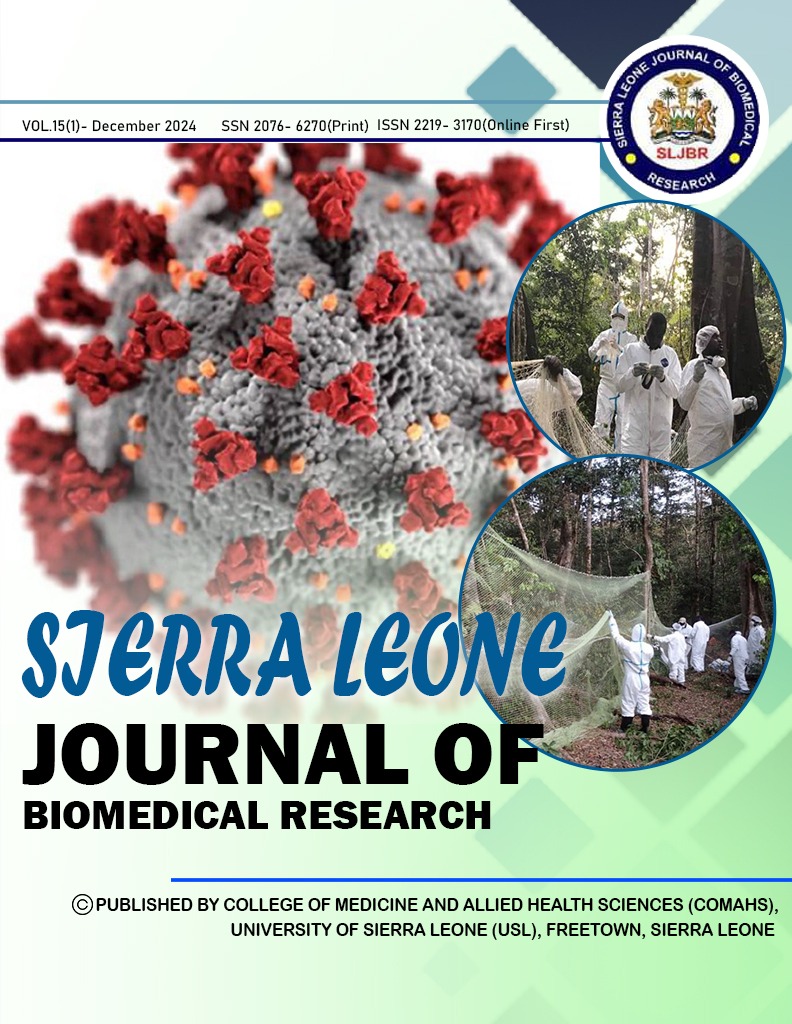Multisectoral One Heath Based Joint Risk Assessment of Human and Animal Rabies in Selected Districts of Sierra Leone
DOI:
https://doi.org/10.4314.1.5Abstract
Rabies is an endemic priority zoonotic disease in Sierra Leone and scores of sporadic dog bites resulting in human fatalities have been recorded. However, risk assessments to determine likelihood of exposure and impacts on various communities has never been done. To fully understand the possible risks associated with rabies virus disease in various communities, a multisectoral transdisciplinary One Health base Joint Risk Assessment (JRA) supported by FAO, OIE and WHO was conducted. JRA was done for six districts by trained experts drawn from the ministry of health and sanitation, ministry of agriculture, ministry of environment, and universities. The underlying assumptions for the JRA was that rabies was prevalent (although no reliable epidemiological exists) and that epidemiological linkages in transmission exists between environment, animal (domesticated, unsupervised, and wild), and humans. Risk framing of the rabies hazard was based on the high incidence of exposure to sources of rabies including rabid dogs, cats, wild animals (Squirrels, and other rodents), accidental laboratory infections as a resulting of not adhering to best biosecurity practices, and improper/unhygienic handling of infected carcasses of wild animals. Following hazard and exposure characterization, a risk matrix was utilized to qualitatively determine the likelihood (negligible, low, moderate, high) of exposure and impact (negligible, minor, moderate, and severe) of the exposure on individuals and community. The JRA matrix revealed for Western Area Rural for instance, that a hunter exposed to rabies will have a high likelihood of contracting the disease, while impact is minor. Likewise, a child bitten by a rabid dog in Kenema will have a high likelihood of contracting the disease and impact will be moderate. This is consistent with the goal of the JRA and OH approach that suggest different exposure sources are associated with varying risks to humans and communities. Overall, the multi-sectoral OH JRA will inform policy makers and help formulate integrated action for detection, prevention, preparedness, and response to rabies virus disease in Sierra Leone.

